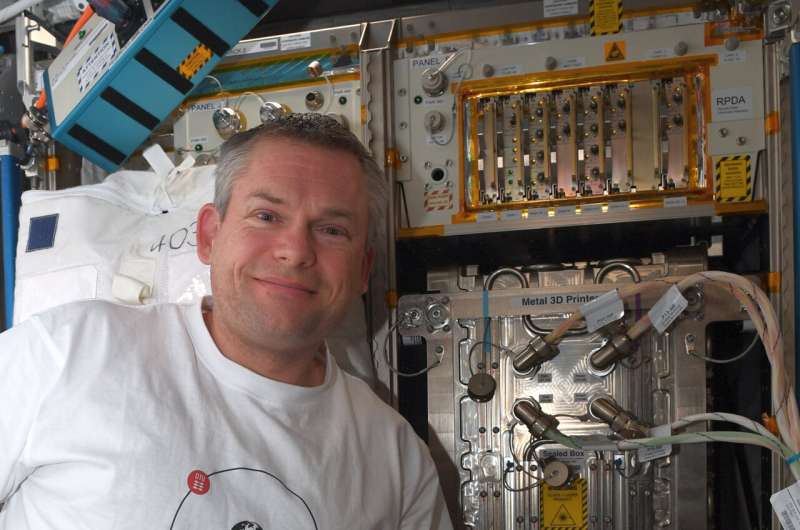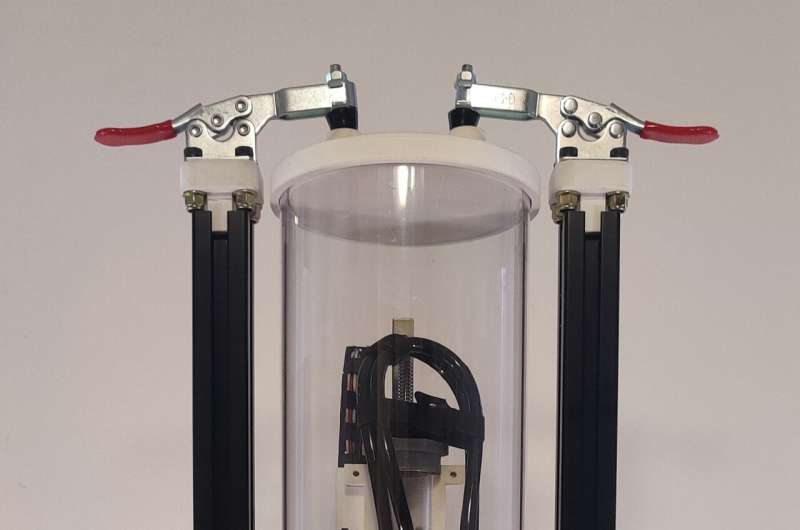Orbital Matter doesn't plan to churn out burgers or machine-like people, their long-term goal is to become the first construction company in space—one day manufacturing large elements of space infrastructure directly in orbit, on the moon and Mars, while reducing costs and increasing access to space.
Their new method of 3D printing has been developed to work directly in a vacuum and under microgravity, without requiring heat to be generated during manufacturing. As there is no atmosphere to cool down parts via convection cooling, like blowing on a spoonful of hot soup, it takes a long time—months—for parts to cool down just through irradiation (simply waiting for the soup to lose heat). Orbital Matter's process prints without heat, making it much faster to build structures in a vacuum.
3D printing, or "additive manufacturing," was first tested in space on the International Space Station in 2014 and has proven useful for the on-demand manufacturing of tools and spare parts. So far, no 3D printing technology has been shown to work in the significantly harsher exposed conditions outside of the Space Station, in "open" space, limiting its use.
Manufacturing directly in space means large structures could in principle be built with fewer materials, as they don't need to withstand the rigors of launch. This could mean large space-based solar power plants, communication antennas, larger telescopes for science missions and even larger space stations could all be built in orbit.
Such structures could provide real benefits, from making electricity cheaper, greener and more accessible for remote areas to reducing the cost of communication and increasing access to it, furthering our general knowledge of the universe and making space tourism cheaper and more accessible.

Orbital Matter has already demonstrated that their 3D printing technology works in a vacuum on Earth, but with the Ariane 6 first launch, they will perform their first in-space demonstration: their three-unit CubeSat (10x10x30 cm) will print a 50 cm-long beam while at an altitude of 580 km, out of a custom polymer material.
"Thanks to the ESA PUSH opportunity, we're demonstrating our 3D printer in orbit a remarkable 12 months ahead of schedule," says Jakub Stojek, CEO of Orbital Matter. "This is a great example of how European technological independence can be built in space, by fostering rapid prototyping for startups across Europe."
Robert Ihnatisin, Chief Technology Officer at Orbital Matter adds, "Ariane 6 will act as a catalyst for the renewed launch capabilities of Europe, and our experiment during its inaugural flight could help Europe become a leading player in in-space manufacturing, as we demonstrate it is indeed possible to 3D print in exposed space."
Orbital Matter has been assisted throughout the planning and development of their mission by Paris-based launch provider RIDE! space, who took part in ESA's PUSH tender and were selected to organize a contest where the winner would receive end-to-end launch management and procurement of one or several deployers.
RIDE! provides a digital platform to handle end-to-end launch services, from scouting for launch opportunities to assessing performance, price and level of service. Besides the platform, the company offers support with instrument qualification, documentation, transportation, launch integration, promotion and much more.
"We're delighted to be part of European space history with our presence on Ariane 6 maiden launch," explains Valentin Benoit, RIDE! CEO. "The whole team is working hand-to-hand with Orbital Matter to finalize the launch campaign of this ambitious and disruptive 3D printing in space mission. I would like to thank Arianespace, ESA's Space Transportation and CIC teams (Commercialization, Industry and Competitiveness) for their support during launch preparations."
Ariane 6 has been designed for all possible futures. At its core is maximum versatility. It can put any satellite or payload into any orbital path. This is made possible with the new restartable Vinci engine that will power up the Ariane 6 upper stage again and again, stopping and starting to insert missions into any orbit they need to be.
It will save enough fuel for a final burn to deorbit and reenter safely back through Earth's atmosphere, or reorbit into a nearby "graveyard orbit."
Provided by European Space Agency



